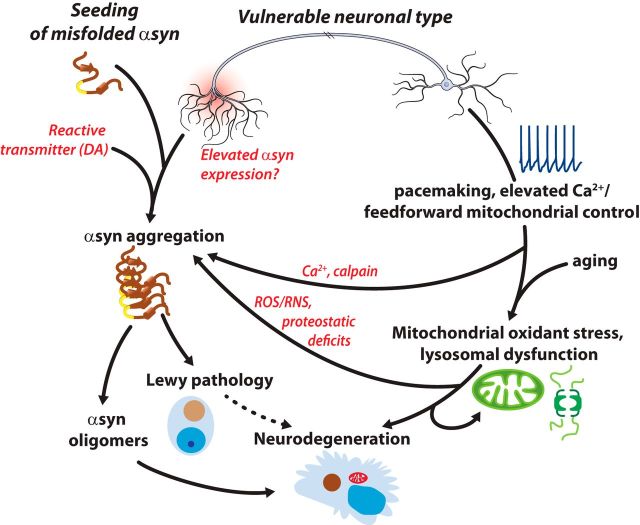Figure 2.
Schematic summary of the factors potentially driving LP and neurodegeneration in PD. The vulnerable neuronal phenotype has a long, highly branched axon, which could lead to elevated expression of α-SYN, as well as increase transmission sites for misfolded α-SYN. Both of these factors could promote α-SYN aggregation, oligomer formation, LP, and possibly neurodegeneration. In parallel, pacemaking, elevated cytosolic Ca2+, and mitochondrial oxidant stress could put vulnerable neurons at risk, both by promoting mitochondrial and lysosomal dysfunction with aging as well as by promoting α-SYN aggregation (through elevated ROS/RNS, Ca2+, and calpain activation, proteostatic deficits). Other potential factors, such as a reactive neurotransmitter (e.g., dopamine), also could contribute.

